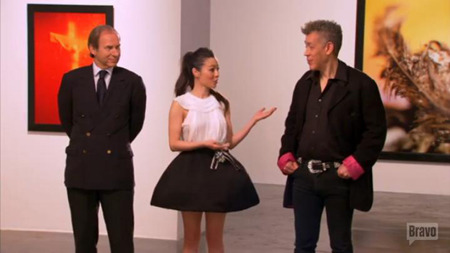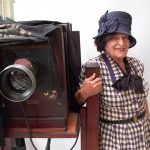The Business of Art: An Interview with Nao Bustamante by Brian Sloan
Other than occasional documentaries on PBS, programs about art and artists are rarely seen on America’s commercial TV networks. At the same time, the fine arts have been obsessed with television, with countless paintings, sculptures, performance pieces, and photographic representations of the medium over the last 40 years, from Robert Frank to Matthew Barney.
In 2010 , Bravo began airing the reality TV show Work of Art: The Next Great Artist, a compelling mix of low-brow format and high-brow subject. Despite its standard competition and elimination format, the series is a relatively daring prime-time exploration of contemporary art and the people who make it. In the recently-aired fourth episode, “A Shock to the System,” the contestants were challenged to make a piece of “shock art” inspired by guest judge Andres Serrano’s Immersions (Piss Christ), a photograph that became an icon of the culture wars in the ‘80s and ‘90s and elicited death threats and loss of funding for the artist. After discussing Serrano’s image, which depicts a crucifix submerged in a glass of Serrano’s urine, the artists proceeded to create works about self-fellatio, child molestation, and transsexuals. In other words, it was not your average hour of network TV.
It was on that same episode that NYFA Fellow Nao Bustamante was eliminated from the program. Of the 14 artists who started off in the competition, Bustamante was perhaps the best known, having amassed a body of work that spans more than 20 years. Why, then, did such an established artist submit herself to grueling 24-hour art challenges and uncontrolled public exposure? I talked with Nao recently about her experiences on Work of Art and about the debate the show has generated in the art world.
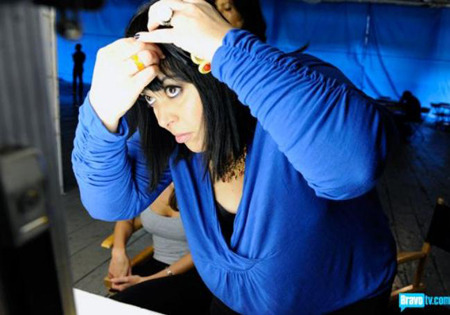
BS: What were your thoughts when you first heard about this reality show on fine art?
Nao Bustamante: I feel reality TV is a lot like conceptual art, where you start with an idea, framework, or concept and you then allow things to play out. Also, I think there was a moment in the last decade when TV became radicalized. Diverse people and people with problems started showing up on all these shows. These programs seem to be showing the fragility of humans, the disease…going more and more toward the dark.
BS: One of your first works was a performance piece you did in the early ’90s on network TV, posing as an exhibitionist on The Joan Rivers Show.
NB: I was really interested in the idea of bringing art into that particular realm. And I think that’s exactly what happened. I don’t think the art world has infiltrated the mainstream. The mainstream has infiltrated the art world. The mainstream is like, “Oh, a show about artists, that’s cool,” whereas the art world is more up in arms about it. There’s this tremendous judgment coming out of the art world about this show. When did the art world become so clean and pure anyway? It’s absurd to say that this show is somehow muddying up the clean petticoat of the art world.
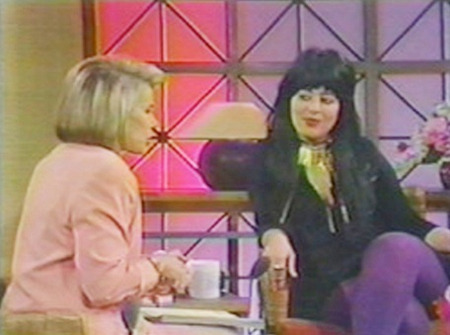
BS: Why do you think the art world is bothered by this series?
NB: I think a lot of people in the art world have been distressed that the conversation on the show isn’t up to their level. At the same time, the producers have a responsibility to make it accessible to a broad audience. In a way, the show has missed some opportunities to talk about simple ideas, like portraiture. On the other hand, art infuses TV every day. Art produces culture, and hopefully new cultural ideas get expressed in the art world. I think you can see the influence of the art world everywhere on TV.
BS: What motivated you to apply for the show at this stage in your career?
NB: I was on a classic trajectory of doing my art and getting a retrospective at some point at a big museum and then dying and having my work be worth more money. So I thought I’d shake it up a little. I have a habit of making myself uncomfortable and I wanted to feel that discomfort again.…of doing something that was not in my comfort zone.
BS: As an artist known more for your performance work, did you feel at a disadvantage competing against visual artists?
NB: The way that it was explained to me, the show was about lifting the veil on the process of art and I thought that I could contribute to that. I had a strategy that was to only do things that I didn’t know how to do. I wanted to model a process for everyday people who are creative and want to work with materials. I wanted to model a behavior that is not knowing what you’re doing, but doing it anyway. And that’s what I did.
BS: Most artists work alone, but on this show all fourteen of you are in this open studio space.
NB: That was awful. I like collaborating and I like being on production crews for films I’ve worked on, but this was really crazy and confusing. Some artists were running around asking everyone’s opinion. I was in the keep-to-myself mode…mostly because when I’m in the process of making art it’s a very delicate and fragile moment. If you open it up to other people’s opinions it can really crush you.
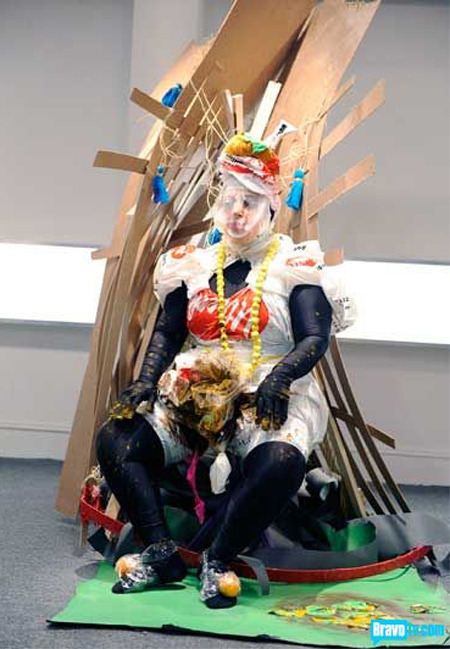
BS: So how did you feel about the judging process?
NB: I used to show animals at the state fair and [the show] was a little like being at the state fair; everyone would have their sheep on the table and they’d check out the haunches. It kind of reminded me of being at the state fair and working on a champion lamb.
BS: Did you think the show’s time limits for making art, usually in 24 hours or less, were unrealistic?
NB: I feel like it’s television and [it] has to have a level of containment in order to produce it. The producers of this show were going with a formula that had worked for them in the past. I think it could have been more interesting to experiment with it, and I hope that they can crack open the formula more in the future.
BS: Reality television is all in the editing. How did you feel you were represented in the final cut?
NB: Maybe about one-twentieth of what I thought I was experiencing actually showed up in the final, edited version of the shows. There’s probably some relief and some disappointment for all the players. The most mundane things I’d said appeared on the show and then the most brilliant things I’d said didn’t show up at all.
BS: Do you think the elimination process has a parallel to the real art world?
NB: There is a kind of “either you’re in or you’re out” mentality [in the art world]. But the art world is a very mysterious and complex place to do your business, and the show doesn’t really reflect that. The show does reflect that judgment is arbitrary and subjective. But isn’t that part of what’s being shown here, the subjectivity of judgment? I think for most of the episodes, the artists were miffed about who got eliminated. We often did our own straw poll, and someone who was on bottom we thought should have been on top. And then someone would win who we thought should have lost.
BS: Given all the judging and eliminations, do you feel the show represents the artistic process?
NB: In a way, I don’t think it’s any more absurd than doing a life story in a feature film. It’s a construct for showing something and understanding something. The show is a real attempt to show the art-making process. You could cite documentaries that do that more successfully, but they didn’t reach the kind of audience that this show has. That was the intriguing part to me.
Brian Sloan is a writer, filmmaker, and novelist based in New York City. His website,www.briansloan.com, has links to all his work as well as his daily blog, Hi-Fi Bri.

